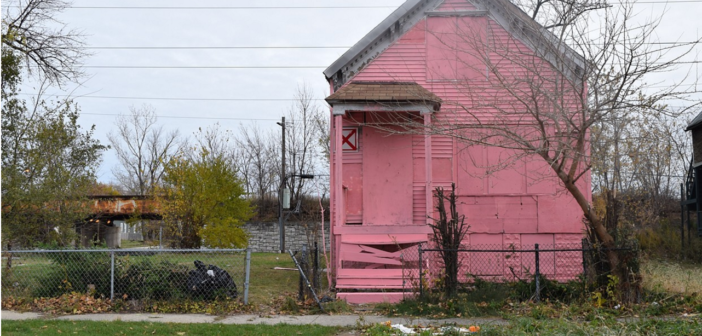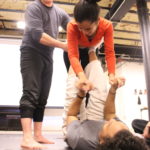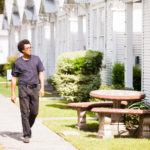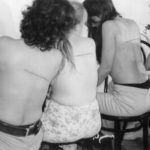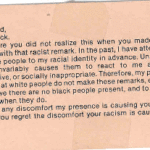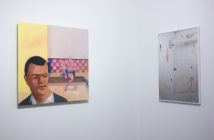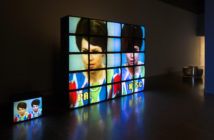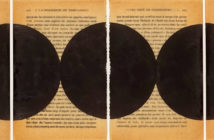Since 2013 I’ve been focused—educatively, academically, artistically—on ‘socially-engaged art’ and the idea of learning in public.(1) Over the course of the last ten years, I’ve grown to understand the the site of my own work (as a curator, educator, artist and communit(ies)y member) as the space between art and audience. The social and ideological role of art and its institutions and the learning experiences of art viewers have guided this work, while curatorial practices, pedagogy and performance have continued to inform it. Coming to terms with the social qualities of my own practice, one taking place primarily within sites and networks of art, had offered me some perspective on how to critique such practices.
True to form, when invited to co-produce a series of texts on socially-engaged art with Big Red & Shiny and Now + There, I was struck with my usual impulses—I was sincerely grateful, I asked “why us?”, “what is the strategy?”, “how much time do we have?” and “who is the audience?”2) The amateurism of my experience as a contributor was palpable, these requests were a bit over the top, we didn’t quite have the capacity to consider it all within the amount of time we had. I realized that my approach to this collaborative writing assignment mimicked the initial stages of my process in creating programmatic exhibitions, curricula or event-based work. I was confused what aspects of my creative efforts were a socially-engaged practice, or if in some cases I had been mistaking socially-engaged art with simply attempting at Good Work.(3) In the thoughts that follow, I’ve described some problems and tools with which to approach the critique, interpretation, and quality of socially-engaged art and practices. In the end, the intended audience for this text are the artists implicated in my perspectives, contemporary practitioners in the region and beyond, those that will read this and roll their eyes at my naivete and those that might find an idea they haven’t considered yet. I have in mind that which I want to explore further and the conversations I would hope we can have with one another.
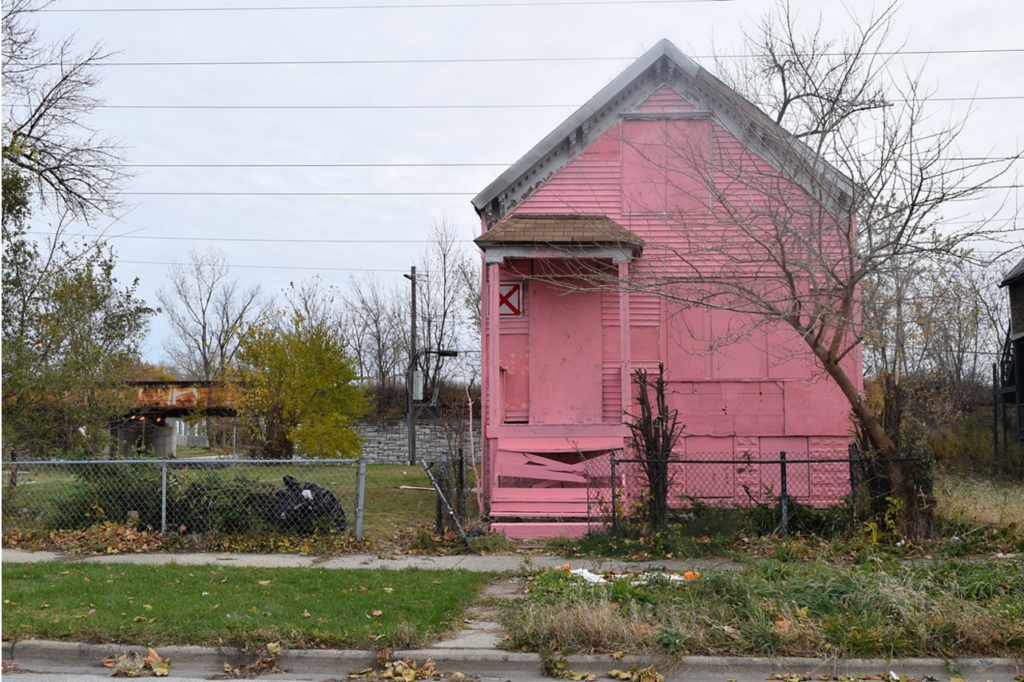
Amanda Williams, Pink Oil Moisturizer (Fall; Overall), 2014. From the Color(ed) Theory Series. Via awgallery.com
Participatory art, dialogical art, museum education, art education and learning theory, pedagogy and public pedagogy, public art, relational aesthetics, conceptual art, social sculpture, land art, new genre public art, activism and political art, guerrilla art and the situationists, transdisciplinary research, community organizing, placemaking, urban design, civic design, disruptive innovation, the “creative economy”, theater, constructivism, curatorial and other creative institutional practices, philosophy, interventions, happenings, installation and performance are but a few of the disciplines which influence the making, experience and interpretation of socially-engaged art. Incorporating methods mentioned above, and others, the inter- and often trans-disciplinary nature of socially-engaged art isn’t organized enough to qualify as a ‘domain’(4); there exists no one ‘field’, or combination of fields, that can render judgments(5) of such works and practices. Complicating things further is the fact that some of Art’s most interesting and successful social practitioners may, in fact, be non-definitional, distancing themselves from the industry of Art and/or practicing a process of devolution.(6)
Andrea Fraser’s “L’1% C’est Moi” put the irony of Art’s relation to luxury goods with the common emphasis on social justice in some contemporary art networks. Our “claim to represent a social force while our activities are directly subsidized by the engines of inequality,” she explains, “can only contribute to the justification of that inequality—the (not so) new legitimation function of art museums. The only “alternative” today is to recognize our participation in that economy and confront it in a direct and immediate way in all of our institutions, including museums, and galleries, and publications.”(7) Pampi worked towards an adjacent perspective in “Art with Teeth”, a text outlining the labor, hierarchies, and economies of art under capitalism. Pampi encourages artists to consider themselves workers and find momentum in the influence of labor movement visionaries and describes an ambivalence for the term “art” but a passion for seers, witches, philosophers and medicine womxn, centering a non-art lineage to help contextualize the use of expressive arts for self and community healing.(8)
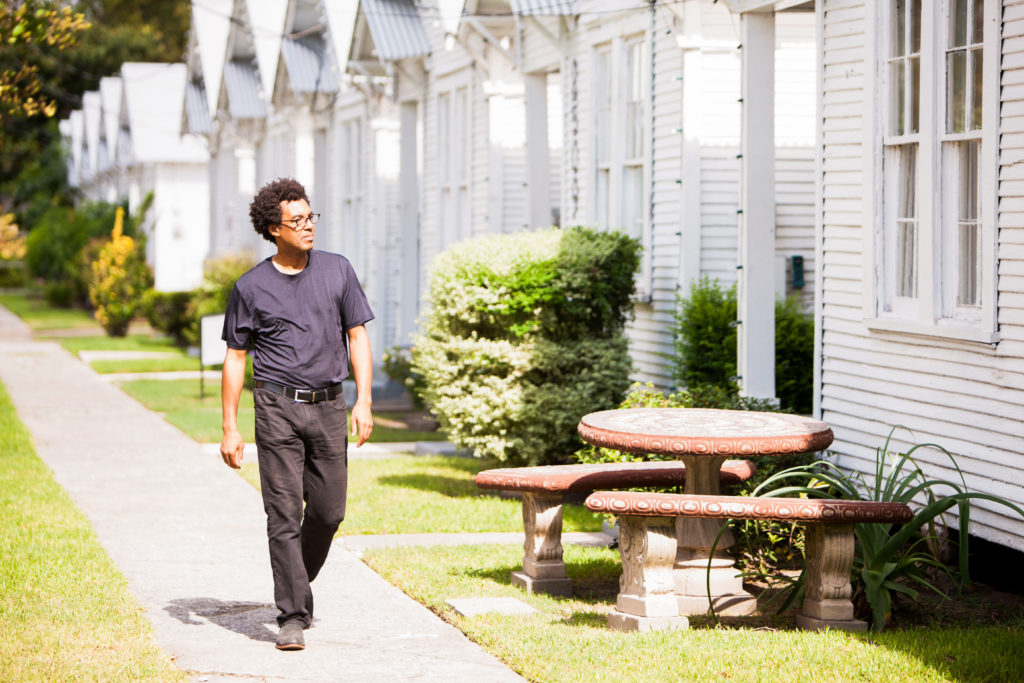
Rick Lowe and the Young Mothers Residential Program. Courtesy of the John D. & Catherine T. MacArthur Foundation.
With all this in mind, a question of quality, critique or assessment seems nearly impossible to grasp. If an artist is working across disciplines, which frameworks do they adhere to or run up against? If a ‘field’ of such practitioners represents more edges than overlapping terrain, what is the strategy for understanding their work in relation to one another, to history and to their domains of influence? Socially-engaged art, in some part, feels like an attempt to embed the social experience of art back into the lived experience of “the people”; where I imagine it once existed quite comfortably before institutions and individuals of power began to instrumentalize its use.(9) In some cases, there is something mimetic about the “contemporary” social practice as if we are illustrating what once was or could have been, without sincerity, without actuality.
And what of service and of labor? In service to whom and why? In one of the best text messages I received this month, Steve Locke suggested, “If artists provide services then the State doesn’t have to.”(10) For example, in collaboration with local government, a socially-engaged artist is paid by the city to ‘create a conversation’ around homelessness, an act that would require significantly fewer resources than actually dealing with homelessness. The conversation is documented and then used on .gov websites and in the press to promote the current political party’s efforts in eradicating homelessness. Social practice artists engaging in work that take place at a site of politics and amongst politicians should have a critical perspective of the methods by which art has been instrumentalized by local, state and national governments.(11)
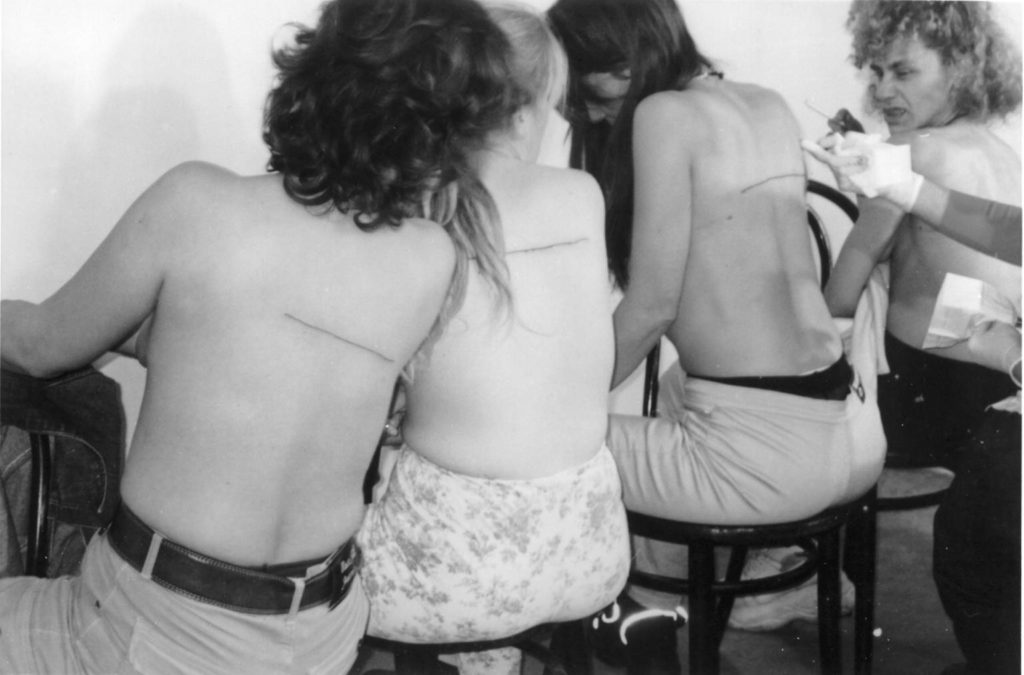
Santiago Sierra, 160 cm Line Tattooed on 4 People El Gallo Arte Contemporáneo. Salamanca, Spain. December 2000. Via tate.org.uk
While not all SEA projects are designed to ‘improve’, ‘enhance’, ‘give voice to’, ‘uplift’ or ‘regenerate’ a specific community or audience, performing labor in service to an othered and/or disadvantaged public is a common goal amongst socially engaged artists. As outlined by Nancy Adajania, this illusion of ‘empowerment’ often “implies the artist-citizen can help those lacking economic, cultural or political opportunities without giving up any of her own privileges.”(12) Works of socially-engaged art that do intend to “make change” or lean hardest towards actuality rather than symbolism(13) will likely require the artist to sacrifice the most cache(14) and cultural capital; to most transparently learn from and unlearn alongside their participants.(15) Can we distinguish a successful or unsuccessful work of socially-engaged art with these considerations in mind?(16)
It may be that in a few hundred years towards the end of this most recent cultural paradigm shift, everybody really will be an artist, creativity will be recognized within everyone and today’s perspectives on art will be grossly outdated. In the meantime, I have the advantage of being able to trouble these various artistic issues while still applying arts frameworks, languages and methods to interpreting contemporary social practice. I’ve spent a lot of time considering the various domains that influence socially-engaged art. Here, I suggested an attention to five essential components that I’ve believe most of these disciplines should have—Time, Space, People, Participation and Context—as lenses for approaching, interpreting and critiquing works of socially-engaged art.(17)
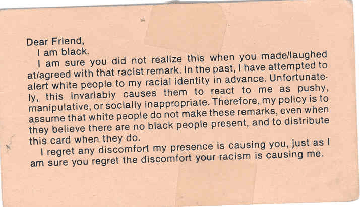
Adrian Piper, "My Calling (Card) #1," 1989. Via blog.Art21.org
TIME
Inspired by a nearness to performance art, especially in our region, the role of time in socially-engaged art is a critical lens to utilize. A durational strategy might prove that a meaningful exchange develops over time, the way that an arts education curriculum may prove to be most successful when facilitators have more time to prepare and when students have more time to learn. Yet as Pablo Helguera points out it is a luxury for socially-engaged artists to have a long time to spend on a particular project such as France Morin’s The Quiet Land Project,(18) so how are socially-engaged artists navigating and making decisions about the use of time in their work? What is the work’s duration, including planning, execution, and/or follow-up? If the work happens quickly, what is the advantage? Whether from an aesthetic or pedagogical perspective, the way time is applied in crafting social exchange is a critical element to review within socially-engaged practices.
SPACE
Like any thoughtful installation artist, social sculptor or civic designer, dealing with space is critical to the socially-engaged artist. This may have to do with dimensionality, site-specificity and/or the creation (or better yet acknowledgment) of place. When socially-engaged artists are invited to work in cities that they are unfamiliar with or to exhibit in biennials, how do they come to terms with creating quality works if their practice most often relies on long-term trust and relationships?
This is not to suggest that socially-engaged art must be a process of placemaking; on the contrary, a concerted effort should be devoted to analyzing the relationship between socially-engaged art, a rhetoric of placemaking, urban development, and gentrification. (When it comes down to prioritizing what methods of socially engaged art we most urgently need to be able to interpret clearly, a top concern should be when, how and by which industries are our practices being instrumentalized). But it is to suggest that socially-engaged artists must be thinking critically about the space, site and/or place in relation to their work and in the context of their domains of influence.
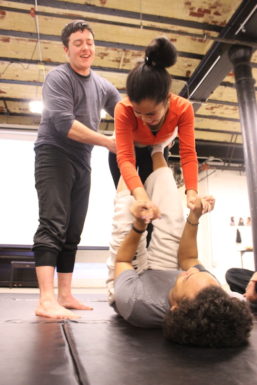
From Conversations in Motion. Via urbanoproject.org.
PEOPLE
Santiago Sierra hired heroin users, who were also sex workers, to be tattooed for the going rate of a shot of Heroin, Adrian Piper created calling cards for those that would utter a racist comment in her presence, Rick Lowe’s “Young Mother Residential Program” at Project Row Houses was designed specifically for young mothers in Houston, Stella McGregor’s Urbano Project puts the learning and leadership of urban teen artists in Boston at the center of the the platform’s creative and strategic efforts. Each of these artists has made specific decisions regarding who has been brought into their work and why, how will this compare to the decisions made by emerging practitioners today?
Questions to consider—who are the PEOPLE of an artist’s work and what decisions did the artist make in designing the PEOPLE’s role? Are they a public, audience, user, client, community, participant, collaborator, co-author, viewer and/or learner? How are they implicated in the work, to what extent are they involved and why? How is this relationship founded, is it designed? And is it sustained? How does the artist understand not only their ‘target audience’ (if there is one) but also secondary or periphery participants in the work such as, drop in audiences, the families of school children, institutional collaborators, financial sponsors or governmental agencies? And how does the artist position a project, or purposefully limit its visibility, within a context of the Art World?(19) In what ways does the artist understand their sense or lack of responsibility or accountability to participants? This too is not to suggest that a work of art must ‘serve’ an individual or social group in a particular manner, but that methods by which an artist involves people in their work has been considered and crafted with intention.
PARTICIPATION
Felix Gonzalez-Torres’ candy pieces depended on their consumption by viewers, Andrea Fraser sold a work in which a collector paid to have sex with her on camera, Amanda Williams invited people to paint houses with her. In these sculptural, performative and theoretical works, the role of participation has been crafted intentionally, how are emerging socially-engaged artists doing the same? What decisions do they make in designing the exchange between themselves, the work and the participant?
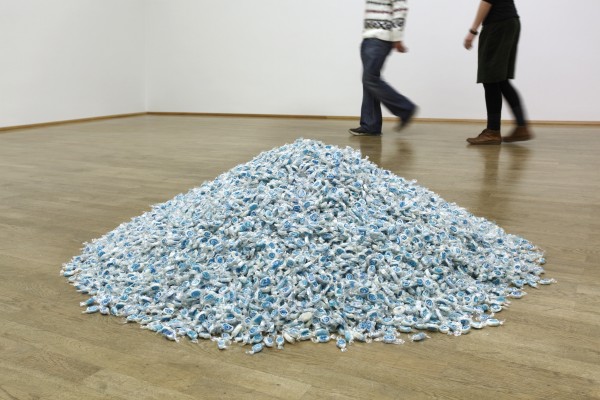
Felix Gonzalez-Torres, Untitled (Lover Boys), 1991. Via Contemporary Art Daily.
Pablo Helguera offers a useful foundational framework - Nominal Participation (“the visitor or viewer contemplates the work in a reflective manner, passive detachment”), Directed Participation (“The visitor completes a simple task to contribute to the creation of the work”), Creative Participation (“The visitor provides content for a component of the work within a structure established by the artist”), Collaborative Participation (“the visitor shares responsibility for developing the structure and content of the work in collaboration and direct dialogue with the artist”).(20) But I urge us to think more deeply about the spectra of prompts that might qualify as creative or collaborative participation and the variables that affect whether these types of participation are actually taking place.(21) Whether a work of socially-engaged art utilizes constructive dialogue, co-authored texts or strategic antagonism, the artist and their critics should be prepared to describe the participatory methods at play.
CONTEXT
Finally, how do these aforementioned lenses work in concert or in conflict with one another? How is the role of time implicated in the space of the work? Who is the artist and what is their relationship to the site? How is a type of participation understood within a specific social, political and/or cultural climate? If the artist is utilizing an amateur approach to a field, did they commit to an amount of preliminary research and if not, why? The lens of context asks how the artist built the work as a whole, it is a notion towards process, a question of how the artist’s history, aesthetics and domains of influence affect the ways time, space, people and participation have been sculpted in a work.
I am knowingly playing both sides here. I say I don’t think it is the responsibility of artists to make holistic works of socially-engaged art that will liberate, be equitable, or even honest. At the same time, I am raising issues of accountability and assessment, side-eyeing socially-engaged art practices that purport to educate but do no such thing. However, I am sure that if via participation other people are implicated in an artist’s work that the artist should be able to discuss, describe or contextualize the structure of that participation. Especially if a work is described as “in service” to a group of people, the artist should be able to describe their relationship to that group and ramifications if the work of art fails. Antagonism, feelings of discomfort and not-knowing are as critical to our socio-artistic fabric as service-oriented practices, trust building and a mapping of languages for the socially-engaged work that we do. The threat is simply being asleep at the wheel, allowing socially-engaged works to pass as successful simply because they are socially-engaged, to allow the instrumentalization of socially-engaged practices to pass without paying any mind.
I’m encouraged to find out all the ways you might disagree with me, where you can expand and the conversations we’ll have next. Many thanks again to Big Red & Shiny and NOW + THERE for the invitation.
- Felix Gonzalez-Torres, Untitled (Lover Boys), 1991. Via Contemporary Art Daily.
- From Conversations in Motion. Via urbanoproject.org.
- Rick Lowe and the Young Mothers Residential Program. Courtesy of the John D. & Catherine T. MacArthur Foundation.
- Santiago Sierra, 160 cm Line Tattooed on 4 People El Gallo Arte Contemporáneo. Salamanca, Spain. December 2000. Via tate.org.uk
- Adrian Piper, “My Calling (Card) #1,” 1989. Via blog.Art21.org
- Amanda Williams, Pink Oil Moisturizer (Fall; Overall), 2014. From the Color(ed) Theory Series. Via awgallery.com
1. In her Introductory Statement for Critical Strategies in Art (2006) and Media Claire Pentecost described the (artist as) public amateur as an individual “motivated by love or by personal attachment, and in this case, who consents to learn in public so that the very conditions of knowledge production can be interrogated.” I’m interested in the concept of learning in public within and beyond the lens of amateurism. Pentecost’s statement on a consent to learn in public was first introduced to me via the work of Sara Hendren.
2. Many thanks to Leah Triplett and Kate Gilbert for inviting me and having patience with this process <3.
3. I have an instinct that there is a relevance between Howard Gardner et al.’s “Good Work” and “The Good Project” in a discussion of quality in socially-engaged art. In addition, another Project Zero research project “Qualities of Quality” lead by Steve Seidel, which aimed at naming excellence in art education through the lenses of: student learning, pedagogy, community dynamics, environment and the elements as evidence of quality, may be a useful tool.
4 “A domain is a new construct, developed by my colleague David Feldman. It refers to any organized activity in society, where individuals can be ranked in terms of expertise. Any occupation, any art or craft or sport, is a domain. The domains in a society can be 5 thought of as the kinds of roles listed in the Yellow Pages.” Gardner, H. “Frequently Asked Questions - Multiple Intelligences and Related Educational Topics”.
5. “Finally, as stressed by my colleague Mihaly Csikszentmihalyi, creativity should not be viewed simply as a characteristic of an individual. Rather, creativity emerges from the interaction of three entities: l) the individual, with his given talents, personality, and motivation; 2) the domain—the discipline or craft in which the individual is working; 3) the field—the set of individuals and social institutions that render judgments.” Gardner, H. “Multiple Intelligences - New Horizons”. 2006. Pg. 104.
6. “This devolution of artistic privilege emancipates the artist-citizen from the fossilized or fetishized ways of “being-artist” that merely sustain and reproduce the self-perception of being a member of class with special status. Significantly, this devolution makes it imperative for the artist-citizen to renounce the institutions within which such ways of “being artist” have been enshrined - institutions that embody the existing inequitable system of distribution - and to shape a devolutionary infrastructure.” Adajania, N. The Thirteenth Place and the Eleventh Question: The Artist Citizen and Her Strategies of Devolution. “Future Publics (The Rest Can and Should be Done by the People)”, 2015. MIT Press, Cambridge, MA. Pg. 30
7. Fraser, A. L’1% C’est Moi. Texte zur Kunst, September, 2011.
8. Pampi. Art with Teeth because #creativeslabor. 2015.
9. It would be so like the elite, the privileged, the oppressor and their institutions to do so, to remove art from an original function just to “discover” that function once again and present it to the world anew.
10. Steve Locke and I were corresponding about this suggestion at length and he put forth 5 critical questions in regard to labor, service-oriented artistic practices and neo-liberalism: who asked for this service? Who decided that the artist (and not the state) should provide it? What kinds of art are possible/permissible in these spaces? What if no one participates or uses the work in ways unsanctioned by the artist? What is entertainment and how does it affect social practice?
11. “So what is at stake here is that the romantic connotations of the artist as a unique, creative individual with a privileged space within society has been co-opted by the state as an economic tool. In many cases, it’s glamorous associations are a cover for the increased precariousness of “creative” (ie freelance) labor. The rhetoric of “everyone is creative” is a euphemism for introducing yet more independence from the welfare state. All this is important for contemporary art, because it means that certain terms that it holds dear now need to be recontextualized: creativity, but also community and participation. ” Claire Bishop in conversation with Dušan Barok, 2009.
12. Adajania, N. The Thirteenth Place and the Eleventh Question: The Artist Citizen and Her Strategies of Devolution. “Future Publics (The Rest Can and Should be Done by the People)”, 2015. MIT Press, Cambridge, MA. Pg. 30
13. In “Education for Socially-Engaged Art” (2011, pg. 6) Pablo Helguera suggests two approaches to SEA, actual (akin to Habermas’ “communicative action”, a type of social action geared towards communication) and symbolic (the representation or illustration of an engagement with ideas or issues).
14. In an interview with Tom Finkelpearl in “Dialogues in Public Art” (2001, pg 242), Rick Lowe describes a process of leveraging and sacrificing the Art World’s respect “Who cares if the arts community can’t appreciate what I’m doing, as long as my target audience respects me for it.”
15. Rika Burnham’s description of the “player-coach” has influenced my own method of co-learning with my students and audiences. From Burnham, Rika and Elliot Kai-Kee. The Art of Teaching in the Museum. Journal of Aesthetic Education, Vol. 39, No. 1, Spring 2005.
16. I am compelled to spend sometime exploring how service-learning and methods of community organizing may also provide useful frameworks for service-oriented SEA.
17. These lenses were first created for my students in Art, Design and Learning in Public at HGSE. Each class would begin with a short video of a socially-engaged or participatory work of art which we would spend 15 minutes discussing via the lenses. Originally, “CONTEXT” was “Aesthetics, Craft and/or Design Style”. The lenses were originally inspired by the title of Vela Oma and Alice Vogler’s performance art series “Time, Body, Space, Object”.
18. Helguera, P. Education for Socially Engaged Art. 2011. Jorge Pinto Books, New York, NY. Pg. 20
19. “While SEA works do not always have to be explicit in their purpose, there is always a clear desire by their authors to engage a second interlocutor (or “client” to use social work terminology) other than the community of participants - that is the art world, which evaluates the project not just for what it has accomplished, but also as a symbolic action.” - Helguera, P. Education for Socially-Engaged Art. 2011. Jorge Pinto Books, New York, NY. Pg. 36.
20. There is lots to uncover in a focused debate around Helguera’s descriptions of Communicative Action, Actual vs. Symbolic, symbolic acts vs. symbolic practices and ‘meaningful conceptual gestures’. Helguera, P. Education for Socially-Engaged Art. 2011. Jorge Pinto Books, New York, NY. Pg. 14
21. There is also lots to uncover in an analysis of socially-engaged art, documentation and pedagogy in this respect, especially as relates to Reggio Emilia.

